Blog Archives
Birds in Lonehill, South Africa
I’m in South Africa for a few days, enjoying the birds as well as other aspects of this interesting country. I photographed most of the birds in this post while on a short stroll through Lonehill Park. Lonehill is an outer suburb of Johannesburg, neighbouring on Witkoppen, and many of the bird species make their homes in both places. This post shows only the birds that I didn’t include in my earlier post about birds in Witkoppen Spruit Park.
First up, absorb the atmosphere of the park by watching this short video:
The centrepiece of the park is a large pond surrounded by reed beds and trees. In the background is the lone hill that gives the suburb of Lonehill its name:
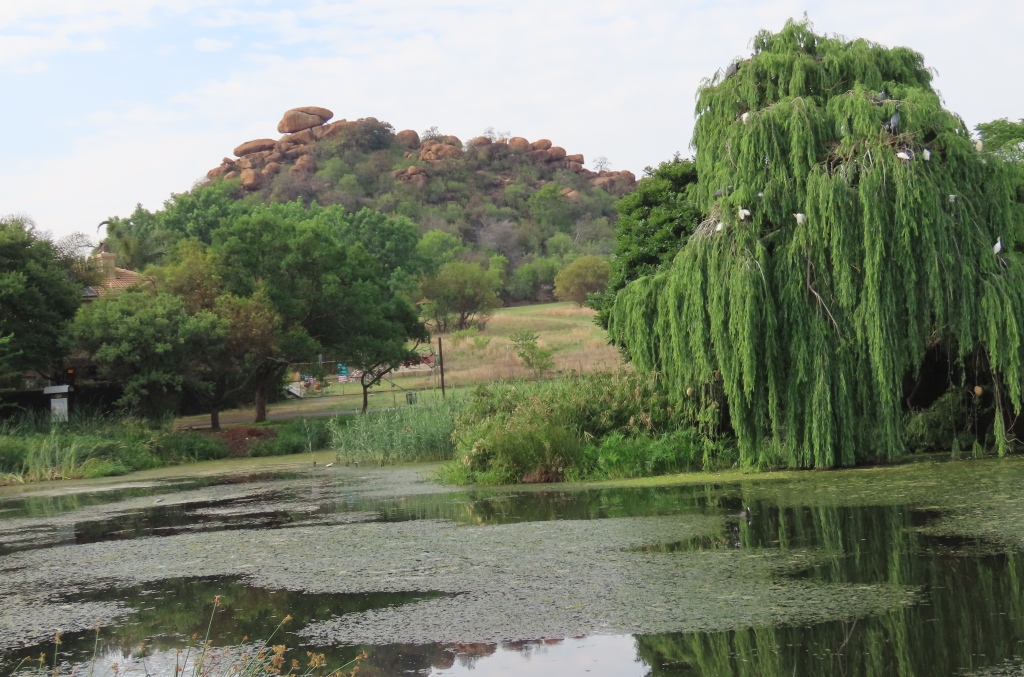
The tree on the right is home to several herons and egrets. They’re quite busy and noisy, as it’s breeding season. From the very top of the tree, a Black-headed Heron surveys its domain:

Lower down, another Black-headed Heron combines preening with sitting on a nest:
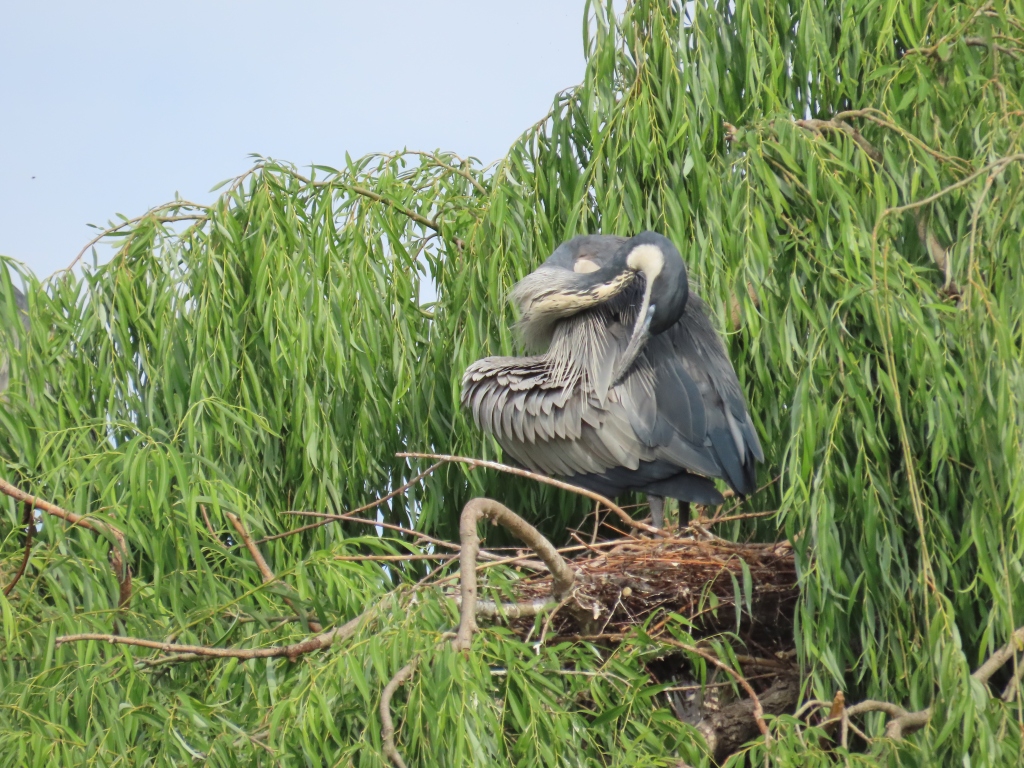
Two Cattle Egrets groom and strut their stuff:
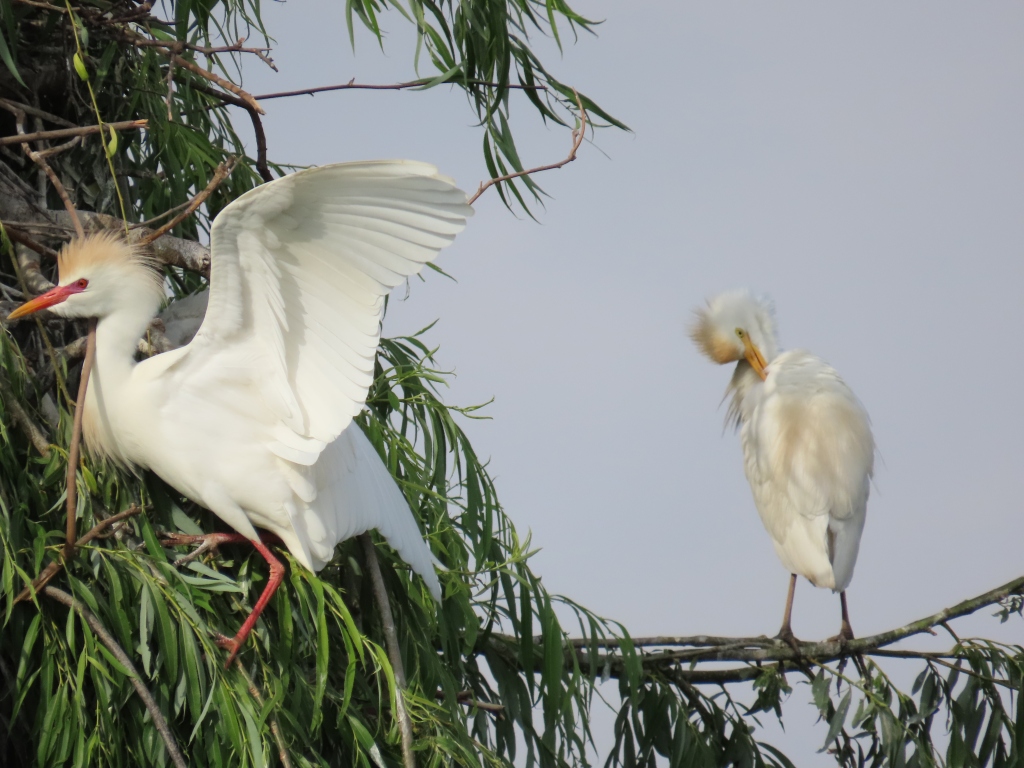
After a few more preliminaries, they get good and cosy:
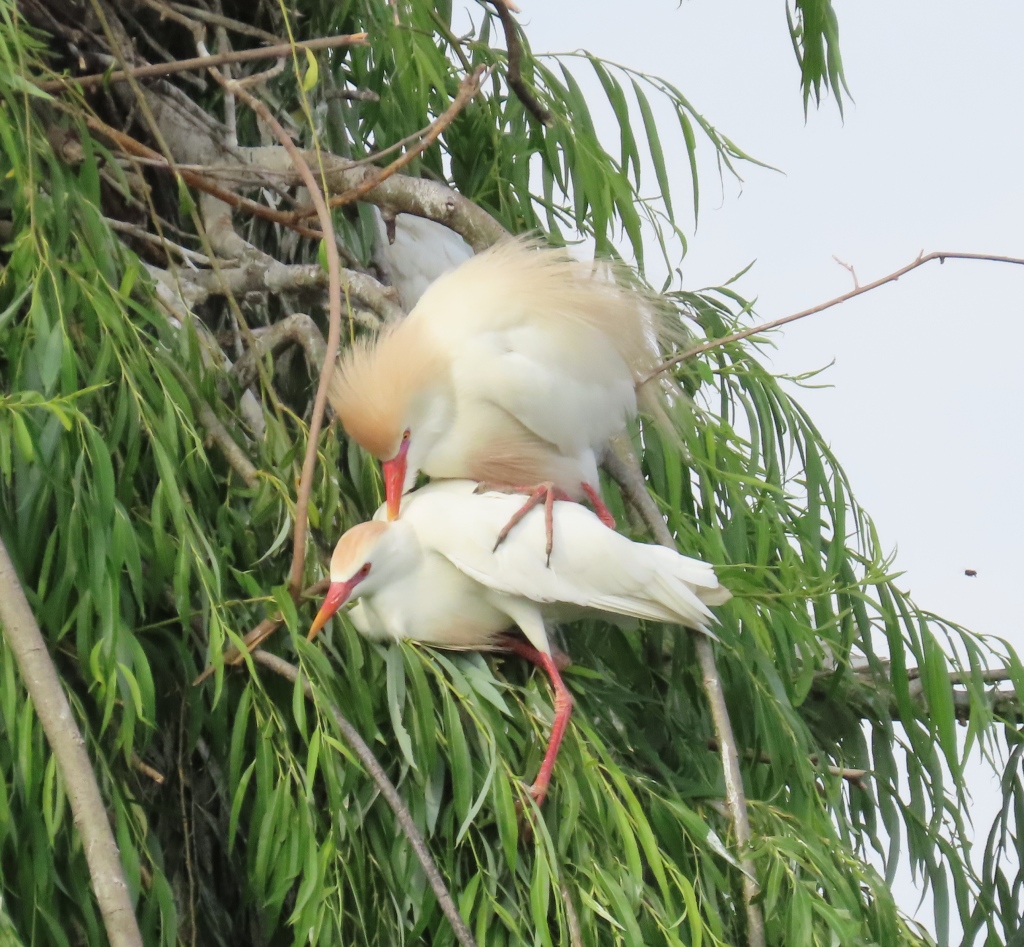
Down below, a Bronze Mannikin perches on a reed stem. I love the colouring of this little finch, especially its two-tone beak:
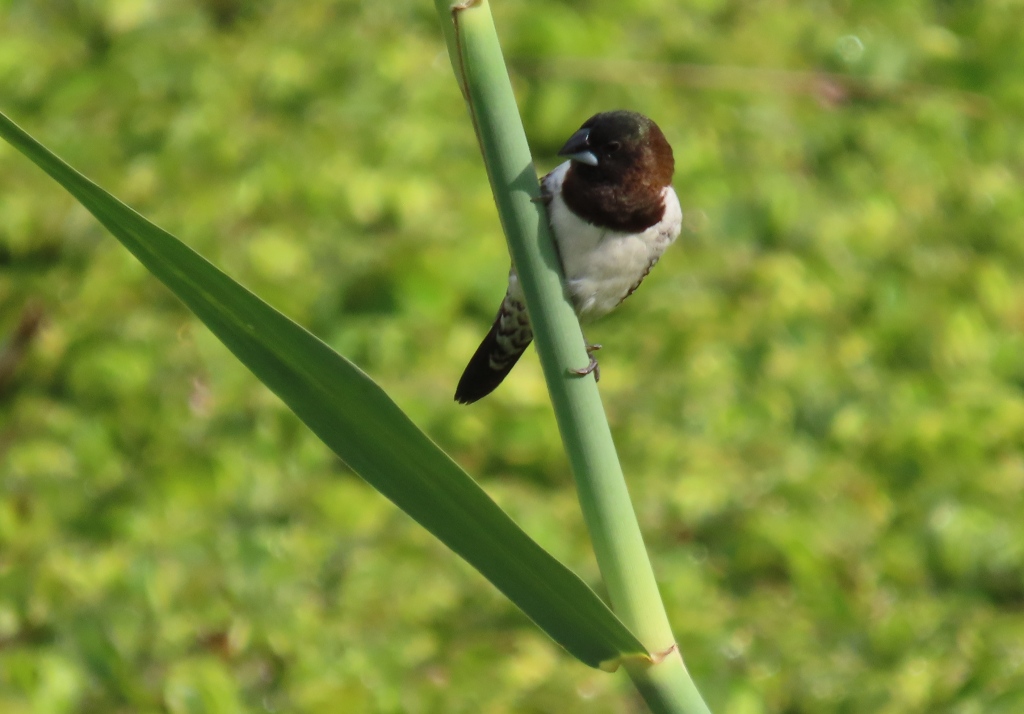
Several Bronze Mannikins were walking on the plants that covered part of the lake. Using my camera’s zoom, I managed to get this shot that shows the water droplets glistening on the plants around the bird:

The next little fellow is a Thick-billed Weaver. Like the Red Bishops and Masked Weavers shown in my earlier post, Thick-billed Weavers build intricate woven nests from reeds and grass:
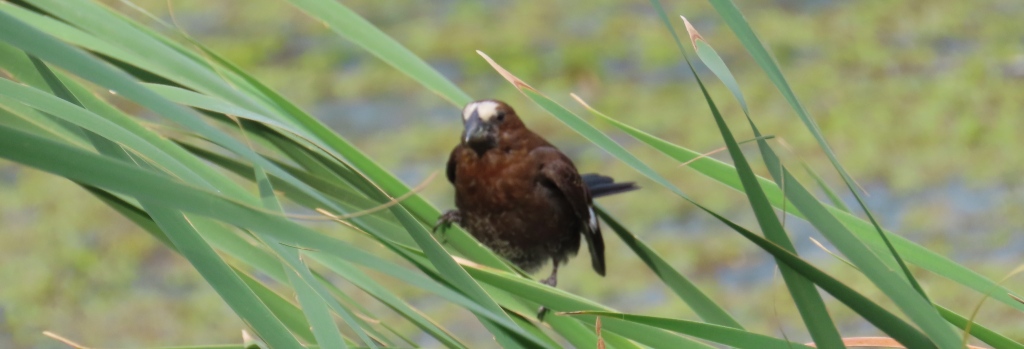
A Common Moorhen shows its red garters:
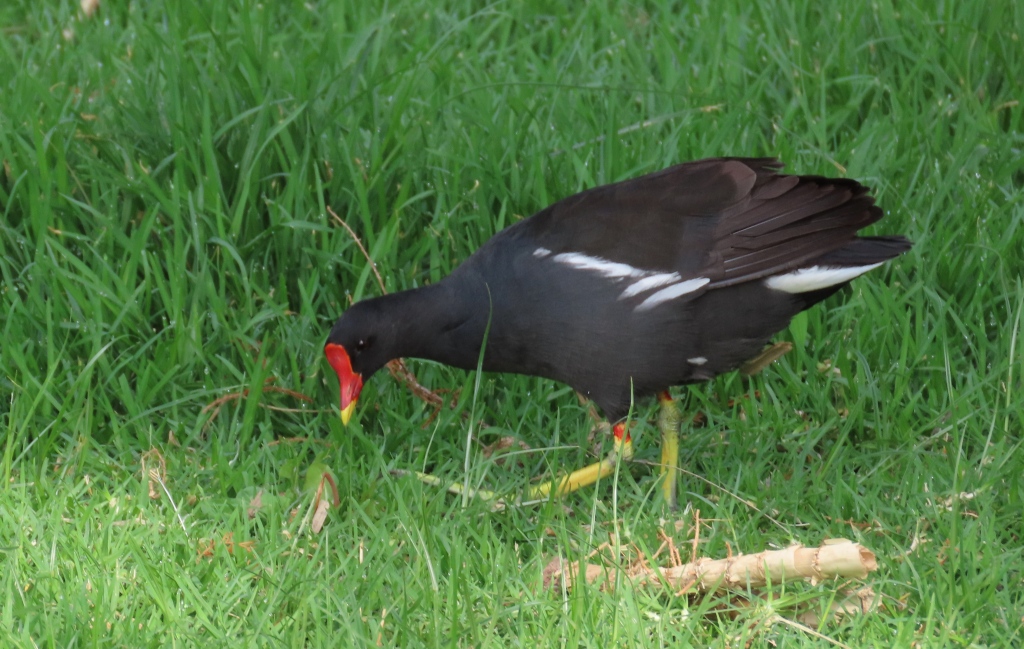
Striking in its coat of electric blue is a sharp-eyed Greater Blue-eared Starling:
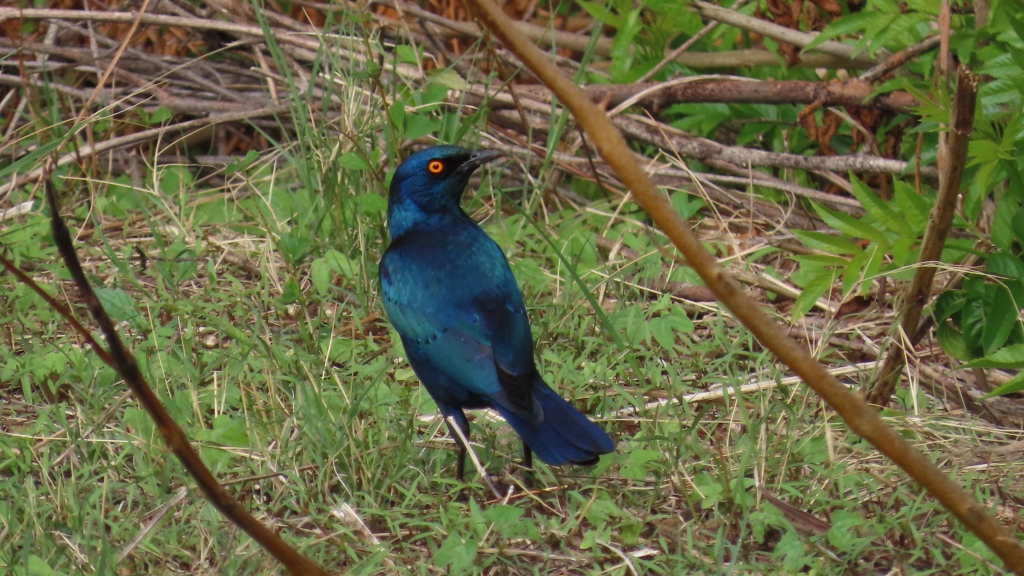
A Laughing Dove and a Rose-ringed Parakeet brighten up some bare branches:

Next up is a Mousebird. I saw this particular bird not in the park, but in the garden of a friend in Lonehill:

Mousebirds get their name from the way they scurry around gathering food, which reminds people of mice. Here’s another shot of the same bird:
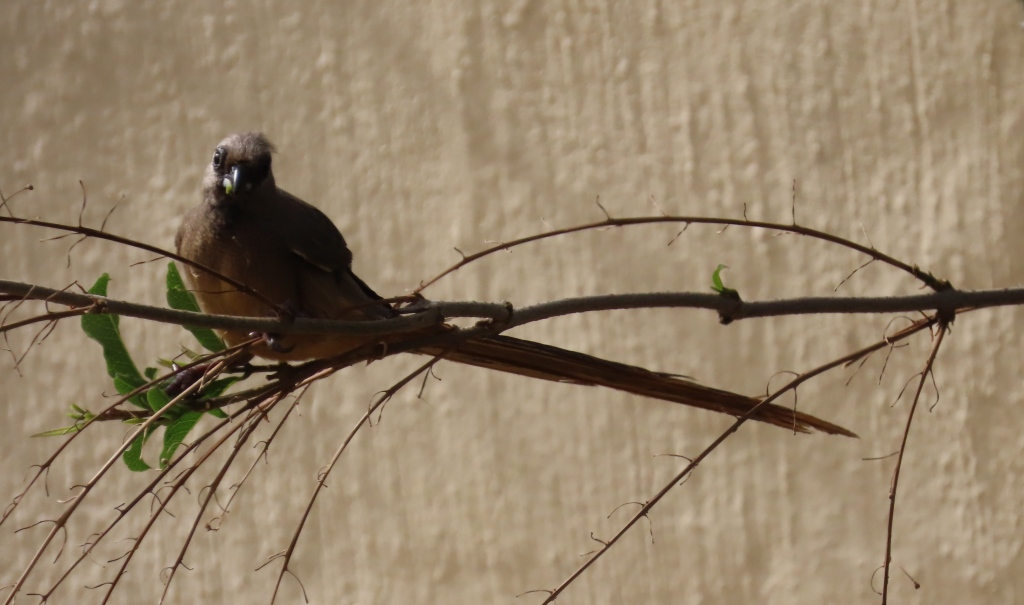
Also in a Lonehill garden, we saw a pretty pair of Rosy-faced Lovebirds, which are native to south-western Africa. There are feral colonies in various parts of South Africa. These two are frequent visitors to our friends’ bird feeder:

Another frequenter of the bird feeder is this Wood Hoopoe, also called a Scimitarbill. Like most of the birds in this post, Wood Hoopoes are native to this part of South Africa. They’re striking birds, almost entirely black with orange bills and feet, and white flares in their wings and tails:
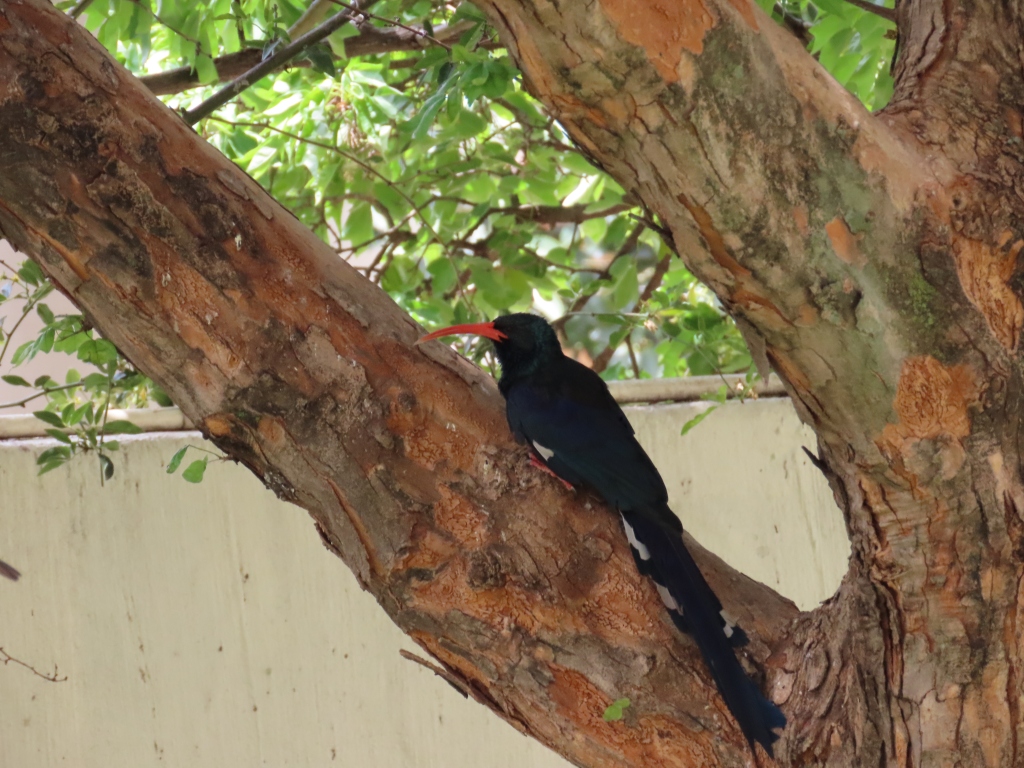
That’s it That’s it for my collection of birds from the suburbs around Sandton. I’ll be back when I spot another bird!